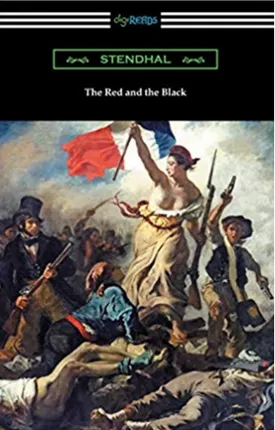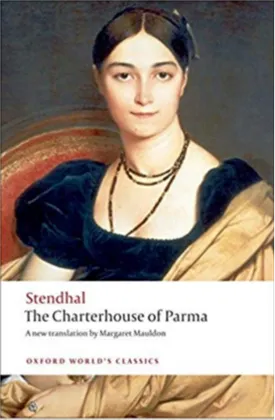Stendhal
Stendhal (1783-1842) was a major French novelist and essayist best known for classics such as The Red and the Black (1830) and The Charterhouse of Parma (1839). He was instrumental in introducing the realist movement to French literature.
The pseudonym Stendhal was used by Marie-Henri Beyle, who was born in Grenoble, France. He studied law at the University of Grenoble, and after graduation, he joined the army and saw action in the Napoleonic Wars. He also traveled extensively. In 1814, he arrived in Milan, Italy and fell in love with a young woman he called “Matilde”. His love letters and diaries documented the depth of his feelings, although she never returned his affections. Beyle’s experiences in Italy had a profound influence on his later work.
From 1821-1830, Beyle lived in Paris, where he worked as musical and literary critic for periodicals, attended salons frequented by leading intellectuals, and joined political movements. During this period he also wrote several novels, such as Armance (1827) and The Red and the Black (1830). The former is a romantic tragedy in which Beyle delves into the process of deciding upon love, marriage, and fate. The latter has been called the first great French realist novel; it is set in a provincial French town and follows, over three volumes, a clerk’s rise in the military and eventual downfall.
Also during this decade, under the pseudonym Stendhal, Beyle began writing his highly acclaimed autobiographical works, including Life of Henry Brulard (1835) and Memoirs of an Egotist (1892). In these works, he explored his personal struggles and reflections on culture, politics, and society.
After 1830, Beyle worked as a diplomat and translator, and in 1837, he returned to Italy. In 1839, he completed The Charterhouse of Parma, an acclaimed novel about an aristocrat and the chaotic era of the Napoleonic campaign. The story is often seen as a veritable celebration of Beyle’s beloved Italy, as well as a condemnation of Napoleon’s despotic rule. It features complex characters, many of whom have been compared to Beyle himself and his own life events.
In 1841, Beyle returned to Paris and decided to organize his papers before his death, resulting in such works as On Love (1822) and Racine and Shakespeare (1823). The last of his writings appeared in print shortly after his death in 1842.
Beyle is often considered one of the first major exemplars of the literary realist movement. He wrote with supreme clarity and made his characters’ inner conflict central to his stories. His works—both fiction and nonfiction—landed him among the greats of French literature, inspiring such authors as Gustave Flaubert, Marcel Proust, and Émile Zola. His writings will continue to intrigue readers worldwide as they delve into the mind of a legendary French author.


